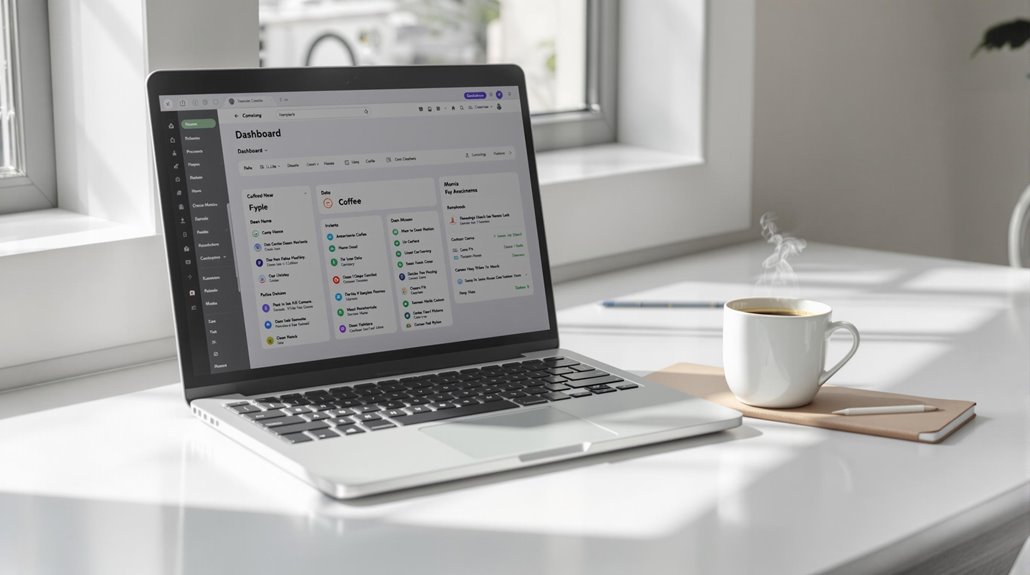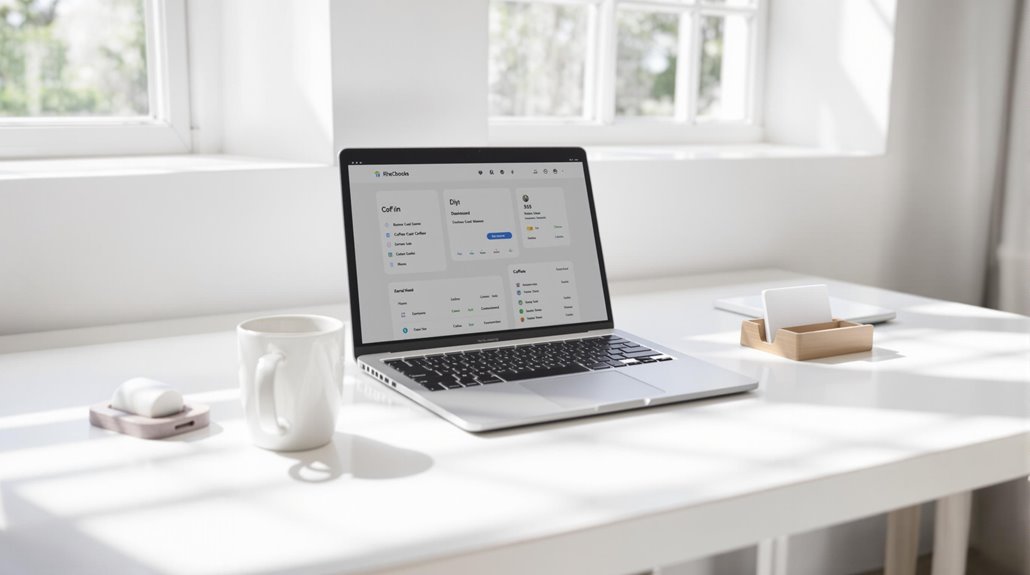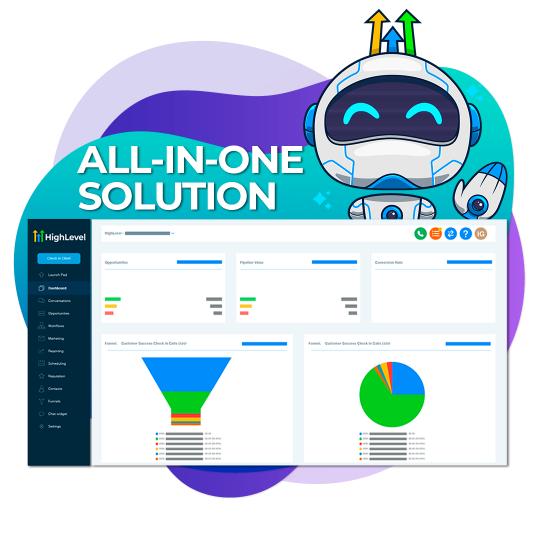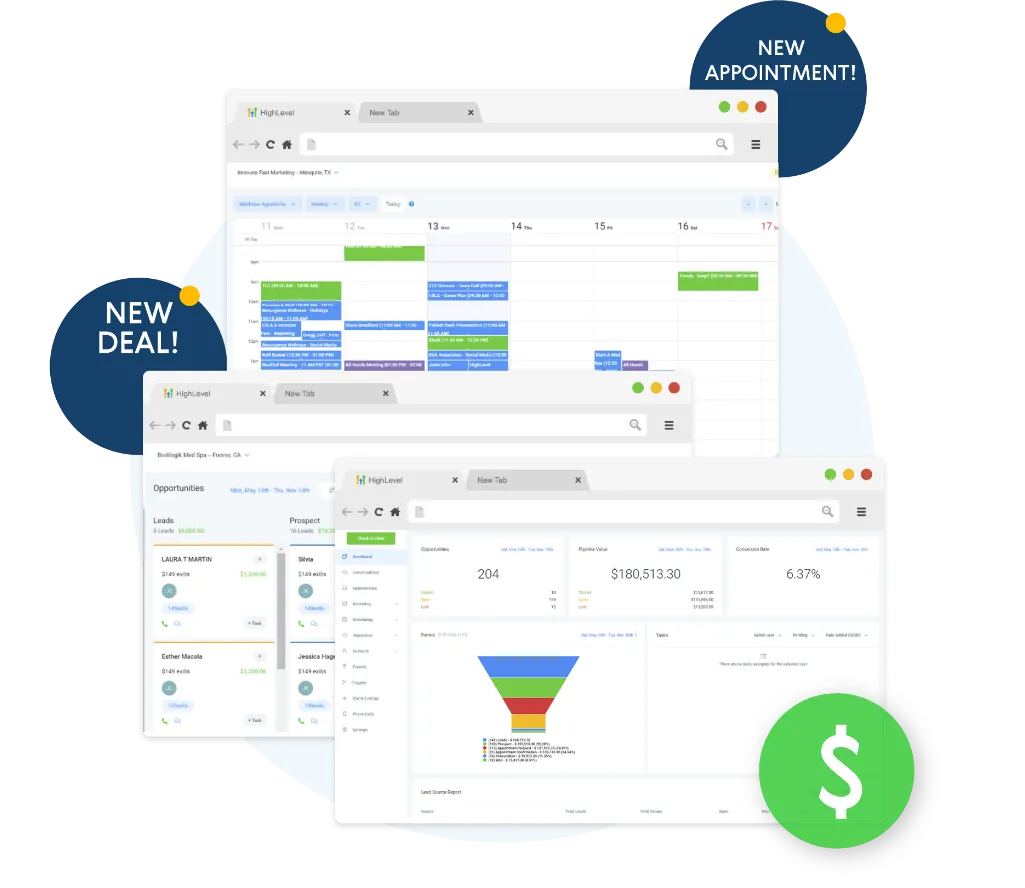Let's make it simple to keep track of your customers. Pick a CRM tool that's easy to use. You need three main things: a way to store customer info, basic tasks that run on their own, and an app for your phone. Look for tools that work well with what you already use. Skip the fancy extras – they just slow you down. Pick a tool that can grow as your business grows. Help your team learn how to use it well. When you keep things simple, you can focus on what matters most – taking good care of your customers.
Feeling overwhelmed by missed leads and disorganized workflows?
Discover the award-winning platform that automates follow-ups, tracks every lead, and keeps your business running smoothly—all in one place. Thousands of businesses are already transforming their sales and marketing with this trusted solution. Don’t miss out—start your 14-day free trial today and click now to uncover exclusive, limited-time special offers!
Understanding Simple CRM Solutions

Simple CRM tools help small business owners like you connect with customers better. These tools are easy to use. You and your team can learn them fast without long training.
The best part is these tools can grow as your business grows. Start small with basic features. Add more when you need them. All your work tools will work together with your CRM. You can pick a price that fits your budget.
Keep track of your customers in one place. Watch your sales. Help customers faster. The CRM does many tasks for you. It shows you what works and what needs fixing.
This helps you make better choices for your business.
Core Benefits for Small Businesses
A simple CRM system brings four big wins for your business.
You'll be better at taking care of customers, get more work done, make friends with buyers, and help your business grow.
Your team will see all customer info in one spot. This helps everyone work better together and reach out to the right people.
The system does small tasks for you, so you can spend time on big things that matter.
When you know your customers well, you can give them what they want. They'll be happy, and happy customers stick around.
It costs much less to keep old customers than to find new ones.
As your business gets bigger, your CRM will keep up. It stays simple but grows with you.
Ready to simplify your business operations?
Streamline your workflows and boost productivity with a CRM designed to save you time and effort. From tracking leads to automating follow-ups, this platform does it all. Discover what’s possible—learn more about how it works and see why so many businesses rely on it every day.
Essential Features Worth Considering

A good CRM helps you work better with your customers. You want tools that make your daily work easier and faster.
These basic tools will help you the most:
- A way to save customer info that you can search and sort
- A clear view of your sales to track what customers want to buy
- Easy access to emails and customer info on your phone
That's all you need to start.
Each tool helps you spend more time with customers and less time with paperwork.
Still struggling to keep your business organized?
Take the guesswork out of managing leads and follow-ups with a platform trusted by thousands of businesses. Say goodbye to missed opportunities and hello to a seamless sales process. Act now—try it free for 14 days and discover how easy it is to stay on top of your workflow. Don’t wait—exclusive offers won’t last long!
Common CRM Implementation Mistakes
We need to get CRM right from the start. First, pick clear goals you can track. Think about what you want to make better in your business.
Next, make sure your team learns how to use the new tools well. Give them time to practice and help when they need it.
If you skip these basic steps, your team won't use the system much. The data will be messy. You'll waste money on a tool no one uses right.
Rushing Without Clear Goals
CRM tools can help your business, but only if you know what you want them to do.
Think of it like picking a new car – you need to know where you want to go first.
Start with simple goals. Write down what you want to fix in your business.
Do you want more sales? Better customer care? Pick goals you can track with real numbers.
Talk to your team about these goals. Make sure they know what you want to achieve.
Other business owners say this step helps them stay on track.
Before you start:
- Pick clear goals you can measure
- Make a simple plan that shows how CRM will help
- Match your ads and emails with your CRM plan
Ignoring Staff Training Needs
Your team needs good training to use tools well. Many teams fail when they rush past training. One in four companies have trouble because they didn't teach their staff the right way.
You can keep training simple. Show each person how to do their own job tasks. Let them learn the basic stuff first. Then show them the special parts they need most. Your team leaders should join in to help others feel good about learning.
Let people try things out as they learn. Ask them what's hard and what's easy. Keep helping them even after the first lessons.
When your team knows how to use the tools well, they'll do better work with customers.
Choosing Your Ideal CRM System

Picking the right CRM tool helps your small business grow.
Think of it like picking a new phone – you want one that's easy to use and does what you need.
Let's keep it simple. Look for these things:
- A CRM that's easy to learn, like your favorite app
- Basic tools to keep track of customers and do simple tasks
- A system that works well with the other tools you use now
Ask other business owners what they use.
Don't buy fancy extras you won't need.
Pick a CRM that fits your budget and can grow with you.
Remember: the best CRM is one your team will actually use.
Start small and add more features when you need them.
Struggling to keep up with your growing business?
Simplify your processes and stay ahead with a CRM that adapts to your needs. Manage leads, automate tasks, and focus on what matters most—growing your business. Take the first step—explore the features today and see how it can transform the way you work.
Cost-Effective CRM Selection Tips
Picking the right CRM does not have to break the bank. Think about what you need now and what you might need later. Pick a system that can grow with you.
Ways to Save Money on Your CRM:
| What to Do | How to Do It |
|---|---|
| Try It Free First | Use HubSpot or Bigin at no cost to start |
| Grow Step by Step | Only buy what you need, when you need it |
| Look at Tool Costs | Pick a CRM that works with tools you have now |
| Count Team Costs | Know how much it costs as you add more people |
| Keep it Simple | Pick easy-to-use systems so teams learn fast |
Tools like Zoho or Freshsales let you pay as you go. You won't need to spend lots of money at the start. Just make sure to check how much it costs to make changes. Also see if it works well with the tools your team uses now.
Streamlining Customer Data Management

Managing your contacts can be super simple. Put all your customer info in one neat place so you can find it fast.
Use tools that talk to each other to keep your lists fresh on their own. Only ask people for the details you really need to stay in touch.
This helps you work better with them and saves you time.
Organizing Contact Information Effectively
Your contacts are like your friends – you need to keep their info neat and tidy. Think of it as making one big list that everyone can use. This way, you won't write things down twice, and your team will always know what's true.
To make your list work better:
- Make simple rules for adding new names and numbers
- Pick who gets to add or change info on the list
- Use tools that help you remember when to call or write
When you keep things clean and simple, your team can work faster. Your customers will be happy too.
The better you know your contacts, the better friends they become.
Data Sync Across Platforms
Your tools need to work together, just like friends playing nicely.
Think of your CRM as the leader of the group. It needs to talk to your email and money tools. A helper called Zapier can connect them – no computer coding needed!
Let your tools share info on their own. This way, you don't have to type the same thing twice. Plus, you won't make mistakes.
Start by linking your email and sales tools first. When your tools can talk to each other, you can spend more time with your customers instead of doing boring desk work.
Team Adoption Best Practices
Getting your team to use a new system takes care and planning. Pick someone to lead the way – they'll help others learn and listen to what the team needs. Make the new system easy to use with your current tools.
To help your team get better at using the system:
- Show them how to use it in different ways – like videos and hands-on practice
- Tell stories about how team members are doing well with it
- Listen to what they say and fix problems fast
Make sure to match the training to what your team does every day. When you do this, your team will want to use the new system more.
Measuring CRM Success

Let's make sure your CRM system helps your business grow. Pick two or three clear goals that will help your team. Think about what you want to fix or make better.
Then pick numbers to watch, like how many sales you make or how much money each customer spends.
Your CRM has simple tools to check these numbers. Make a simple picture board that shows your key numbers.
Meet with your team once a month to look at them. This way, you can see what works and what doesn't work with your customers.
Don't try to track too many things. Just watch the numbers that help your business grow the most.
Future-Proofing Your CRM Strategy
We want our CRM to work well now and later. Pick a system that lives on the web and can grow as you do. Make sure the price fits what you need.
Pick a system that can:
- Work with your other tools
- Be easy to learn
- Show you how well it works
Train your team often. Write down how to use the system. Keep track of what works and what doesn't.
Look at what's new in CRM tools. Change how you use yours when you need to.
You don't need the biggest system. You need one that helps your team do good work without spending too much.
Maximizing ROI Through Minimalism

Getting more from your CRM doesn't mean spending lots of money. Pick only the tools you really need and skip the fancy extras that won't help your business grow.
These simple steps can help:
- Let computers do the boring work
- Keep all your info in one place
- Make work steps shorter
Pick a CRM that does these basic things well:
- Stores customer info
- Works with email
- Grows with your business
- Fits with your other tools
Remember: You don't need every bell and whistle. You just need what works for you.
Watch these numbers to see if your CRM is helping:
- Money saved
- Money made
- Happy customers
By looking at real numbers, you can be sure your CRM is worth what you paid.
| What to Do | What You Get |
|---|---|
| Use computer helpers | Cut desk work by half |
| Put data in one spot | Make choices faster |
| Make work simple | Get more done |
Conclusion
A simple CRM helps your small business run better. Don't worry about fancy tools – you just need the basic ones that work well. Train your team to use them right. Keep track of what helps your business grow. Your CRM can start small and get bigger as you do. Think of it like a plant that grows over time.








